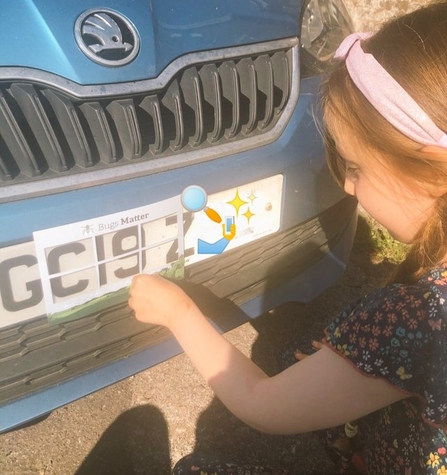Header image credit: James Adler
Where have all the insects gone?
This summer many of us will set off in our cars for UK holidays, headed for the coast, the lakes or the countryside. But do you recall journeys of old, pulling over to rid your windscreen of insect splats. Or perhaps, being tasked to clean to clean the family car after a UK break, scrubbing at the number plate to get rid of the most stubborn of dead insects. But, think, when was the last time that happened? How will that contrast with this year?
Chances are the last time your car’s windscreen had an abundant covering of insects was some time ago but, as with all things gradual, change becomes more noticeable when we take time to mark the difference. This difference has been named the windscreen phenomenon. The stark reality is that due to habitat loss and the widespread use of pesticides, insects are in crisis and that is something that impacts us all.
In Hertfordshire, we have just 0.5% of land attributed to wildflower meadow and that may go some ways to explaining why our insect numbers are struggling. The threat to our pollinators, bees in particular, has been well covered and that is hardly surprising when we rely on animal pollination for 75% of our crops, with hard-working bees doing the brunt of that work. But bees are not the only do-gooders amongst the bugs. Insects provide natural pest control services, decompose organic matter and recycle nutrients into the soil. The long and the short of it is we need all these little critters.
As Sir David Attenborough has said: “If we and the rest of the back-boned animals were to disappear overnight, the rest of the world would get on pretty well. But if the invertebrates were to disappear the world’s ecosystems would collapse.”
High time then that we get a real grasp of what’s happening with our insect population. Citizen science may be key to that, to enable valuable evidence to be gathered and to detect patterns or trends. Last year, a citizen science survey led by Kent Wildlife Trust and Bugslife revealed that the abundance of flying insects had declined by nearly 60% in the few short years from 2004 to 2021. Such surveys demonstrate that we all have the ability to contribute to collecting meaningful scientific evidence and this is the case behind the Bugs Matter campaign.
Bugs Matter encourages sign up to survey insect findings on any essential journeys made up until 31 August 2023. The first step is to download the app and create an account - then the fun begins! You will get sent a ‘splatometer’ grid (though you can also choose to print one to cut out and use). Before you set off on your journey, make sure your number plate is clean and insect-free. Then, when you arrive at your destination, use your splatometer to count the bugs or not as the case may be if there are none to see. You then record your findings by submitting a photo and the details via the App. It’s an activity that the whole family can take part in and anyone who records a journey will be making a valid contribution to the survey.

Image credit: Chloe Edwards
There are, of course, other ways insects can be encouraged and as individuals and communities we can do our bit. Take gardens – large or small – these can be made more insect and wildlife-friendly with thoughtful planting, leaving lawns or patches of lawn unmown or by us simply being a little more carefree about weeding. Creating this sort of environment welcomes natural predators such as ladybirds, hedgehogs and birds, which all help to keep slugs and aphids under control, and attracts the bees and butterflies that we all enjoying watching. Using organic deterrents at home over chemical pesticides is much kinder to our insects and the environment and there are easy swaps to be made. For instance, ditch the slug pellets and try putting straw or egg shells around the base of the plants you want to protect, you will probably find such solutions can be equally as effective.
It’s worth remembering that many of our favourite garden visitors are entirely reliant on insects to survive. Look to the skies too as this includes the swifts, swallows and martins that we enjoy watching every summer, whose numbers are dwindling as well. If we can scale up a more sympathetic approach, take action to create insect-friendly parts of our gardens, we will be able to secure wildlife and ourselves a wilder future, in which we all thrive. And we might just be able to go back to those heady days of messy windscreens!
Find out more about the Bugs Matter campaign or learn about wildlife-friendly gardening from us or Wild About Gardens.

